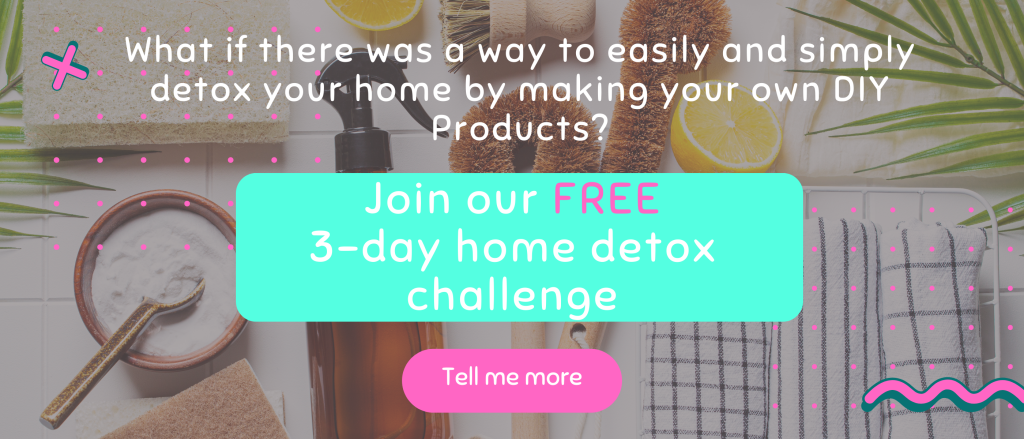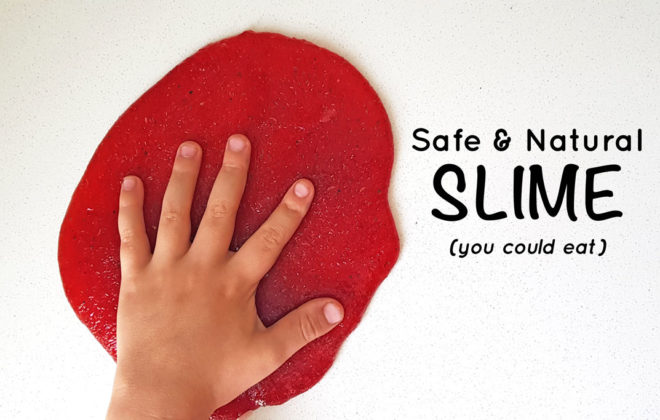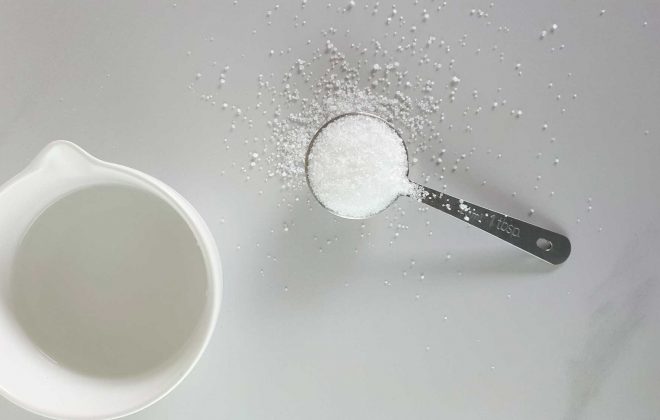12 Toxic Chemicals to Avoid in Cleaning Products
It’s time to discover the hidden dangers lurking in your cleaning products! In our guide, we reveal the top 12 toxic chemicals commonly found in cleaning products that you should steer clear of. From harmful phthalates to skin-irritating sulfates and hormone-disrupting triclosan, we delve into the detrimental effects these chemicals can have on your health and which products you will find them in.
By understanding and avoiding these toxic ingredients, you can create a safer, healthier home environment for you and your loved ones. Due to inadequate labelling laws most manufacturers don’t need to provide an ingredients list for their products, if you’re lucky they will list the active ingredients, with the rest being left to guesswork. However there is a work around, go check out our post what toxins are in my cleaning Products to learn how.
Read on to empower yourself with knowledge and take the first step towards toxin-free cleaning solutions!
1. Fragrance
We have listed this first because if this is on the list you don’t need to waste your time looking at any other ingredients.
The term “fragrance” or “parfum” can be used for any number of chemical concoctions, but you can almost guarantee phthalates is one of them. Manufacturers do not need to disclose their fragrance ingredients as they are protected under the guise of “trade secrets” or “proprietary” information. This means they are allowed to group all sorts of toxic chemicals under “Fragrance”.
The International Fragrance Association (IFRA) lists 3,059 chemicals that are reported as being used in fragrance compounds, none of which they need to disclose to you as a consumer. You can check out the list of chemicals that can be listed under fragrance here. If you want to learn more about the problem with fragrance from here and ways to avoid it click here.
Potential Health Impacts – Cancer, allergies, dermatitis, respiratory distress (including asthma) and can cause potential effects on the reproductive system
Commonly Found In – air fresheners, cleaning products, perfume, cologne, conditioner, shampoo, soap, hand and body wash, moisturisers, washing powders, fabric softeners and even toys!

2. Quaternary Ammonium Compounds
Quaternary ammonium compounds (Quats or QACs) are strong disinfectants and cationic detergent chemicals found in many cleaning products and disinfect wipes and sprays. Quats linger on surfaces long after you have used them, increasing your families exposure every time they come into contact with the surface they were used on.
Quaternary ammonium compounds are also a type of pesticide, yep, you read that right!! Now is that something you really want to use in your home, never mind to wash your clothes and sheets with, to then lay on ALL. NIGHT. LONG. Once you start looking into the chemicals in our cleaning products it is nothing short of horrific!
Quaternary ammonium compounds can cause toxic effects by all routes of exposure including inhalation, ingestion, dermal application and irrigation of body cavities.
Little research has been conducted as to the health effects of quats on humans, however, one study we found shows it can be found in human blood and alterations in inflammatory markers, mitochondrial function, and cholesterol synthesis was observed in a dose-dependent manner. If the other studies conducted on animals translate to humans there are some serious health implications.
Quats also add to the issue of antibiotic-resistant superbugs which is problematic on so so many levels
One of the simplest ways to avoid quats is to not purchase products that advertise as “antibacterial”. If you must buy an antibacterial product check the “active ingredients” and avoid products that contain ingredients that look like this:
- Benzalkonium chloride
- Benzethonium chloride
- Alkyl dimethyl benzyl ammonium chlorides (C12-16)
- Alkyl dimethyl benzyl ammonium chloride (C14 60%, C16 30%, C12 5%, C18 5%)
- Alkyl dimethyl ethylbenzyl ammonium chloride (C12-14)
- Alkyl dimethyl ethylbenzyl ammonium chlorides (C12-18)
- Didecyldimethylammonium chloride
- Dioctyldimethylammonium chloride
Potential Health Impacts – Skin and respiratory irritation, asthma, dermatitis, reproductive system damage and infertility, birth defects, altered immune function, inflammation, disrupt mitochondrial function, endocrine disruption, and inhibited cholesterol synthesis
Commonly Found In – cleaning products, antibacterial wipes and sprays, fabric softeners, dryer sheets, disinfectants, facial cleansers, eye drops, make-up, baby shampoo, baby soap, toothpaste, mouth wash, nasal spray, throat lozenges, dish liquids, hand soaps, air fresheners, spa and pool chemicals
3. Ethoxolated Ingredients
Ethoxylation is the process of reacting ethylene oxide with other chemicals. This manufacturing process can result in two toxic contaminants 1,4-Dioxane and ethylene oxide, both of which are carcinogens.
Determining if an ingredient has been ethoxylated can be a tad tricky. Most ingredients that are ethoxylated can be identified by the prefix, word, or syllables “PEG”, “-eth-” (such as laureth, steareth, ceteareth) “polyethylene”, “polyethylene glycol”, “polyoxyethylene” “polysorbate” or “-oxynol-” in their names. A common ethoxylated ingredient in cleaning products is 2-butoxyethanol with it being found in over 430 cleaning products in Australia.
Potential Health Impacts – Immune, liver, kidney, respiratory, neurological and cardiovascular toxicity, Carcinogen. Skin and eye irritation. Mutagen (causes DNA mutation) and teratogen (disturbs the development of an embryo or fetus).
Commonly Found In– laundry detergents, dishwashing liquid, laundry pre-soakers, synthetic resin, rubber adhesives, wood office work surfaces, pharmaceuticals, food products, insecticides & herbicides, paints, varnishes, lacquers stains, paint and varnish removers, shampoo, liquid soap, bubble bath, moisturisers, suncream, serums, gels, foundation, concealer & lip balms
4. Sodium Laurel Sulphate (SLS) / Sodium Laureth Sulphate (SLES)
Sodium Laurel Sulphate (SLS) & Sodium Laureth Sulphate (SLES) can be derived from petroleum or palm oil. These two ingredients often get lumped together as carcinogens, however, they are actually quite different chemically. It is actually only SLES that can be contaminated with the carcinogenic compound 1,4-Dioxane, which is a by product of it’s production. Sodium Laurel Sulfate on the other hand is produced by a different process and not contaminated with this carcinogen. However, SLS can be an irritant to the skin and cause or aggravate skin conditions.
Potential Health Impacts – SLS – suspected liver toxin, skin and eye irritation, contact dermatitis, rash, hives, eczema, accumulates in organs
SLES – see ethoxylated ingredients
Commonly Found In – dishwashing liquids, kitchen sprays, oven cleaner, window cleaners, laundry detergents, toilet discs, floor cleaners, toothpaste, shampoo, facial cleanser, foundation, hand & body wash, bubble bath, acne treatments
5. Triclosan
Triclosan is a toxic anti-bacterial that the FDA has deemed no better than soap and water. Still allowed in personal care products in Australia despite being banned in the US. If it provides no advantage over good ‘ol soap and water yet is believed to alter hormone regulation, contribute to the development of antibiotic-resistant germs and be harmful to the immune system and gut microbiome why would you choose to use it.
Potential Health Impacts – skin, eye and lung irritation, asthma, eczema, allergic reactions, hormone disruption, harmful to beneficial microflora
Commonly Found In – fabric softeners. laundry detergents, floor cleaners, disinfectants, dishwashing liquid, soaps, hand and body washes, toothpaste, deodorants.
6. Sodium Hypochlorite
Sodium hypochlorite is a caustic chemical commonly known as bleach. It is often used as a disinfectant and whitening agent. Bleach exposure can cause irritation to the eyes, mouth, lungs and skin and individuals with asthma or breathing difficulties are especially susceptible. It can also burn human tissue, internally or externally, especially in small children.
Sodium hypochlorite is harmful to water-based life forms. It is mutagenic and exceptionally poisonous when it interacts with ammonia or acids such as those found in toilet cleaners, vinegar, dishwashing liquids as it releases chlorine gas which is extremely toxic.
Potential Health Impacts – Skin, lung and eye irritation. Non-reproductive organ toxicity.
Commonly Found In – bleach, mould killers, bathroom cleaners, kitchen sprays, laundry whiteners, toilet cleaner, drain cleaners
7. Ethanol Amines – MEA/DEA/TEA
Ethanolamines are a group of chemicals derived from petroleum that work as surfactants and emulsifying ingredients in personal care products and cleaning products. When ethanolamines are used in the same product as certain preservatives that break down into nitrogen, nitrosamines can form. Nitrosamines are a class of more than a dozen different chemicals, which the International Agency for Research on Cancer lists individually as possible and known carcinogens.
Common ethanolamines to look out for labels include monoethanolamine (MEA), diethanolamine (DEA) and triethanolamine (TEA).
Potential Health Impacts – Cancer, skin irritation, asthma, suspected neuro, respiratory, immuno, kidney, cardiovascular and liver toxicity
Commonly Found In – Floor cleaners, oven cleaner, dishwasher detergents, Soaps, shampoo, conditioner, hair dye, lotions, shaving creams, paraffin and waxes, household cleaning products, pharmaceuticals, makeup, fragrances, sunscreens, engine degreasers, industrial strength detergents, pesticides, waxes, polishes, laundry liquids

8. Cocamidopropyl Betaine
Cocamidopropyl betaine is a synthetic fatty acid made from coconuts and is used in many products that are considered “natural” for it’s surfactant properties. Cocamidopropyl betaine can cause numerous health effects, which could be due to the ingredient itself or due to impurities, such as 3-dimethylaminopropylamine and is often confused with coco-betaine which is a different chemical.
Because these chemical impurities are amines, they can, under certain conditions, create carcinogenic nitrosamines in a similar manner as MEA/TEA/DEA does above.
Potential Health Impacts – allergic reactions, suspected immunotoxicity, skin irritation, eye irritation, rosacea, eczema and cancer.
Commonly Found In – dishwashing liquids, kitchen sprays, toilet cleaners, bathroom sprays,shampoo, soaps, toothpaste, shaving cream, makeup removers, body washes, detergents, cleaning products, contact lens solutions, disinfecting wipes, hair dyes, bubble baths, facial cleansers.

9. Optical Brighteners
Optical brighteners are added to fabric, paper, laundry detergents, plastics, and cosmetics to reduce yellowing and make them seem brighter and whiter. Optical brighteners do not clean clothes better instead thy absorb ultraviolet light and re-emit the blue hues that make grays and yellows disappear. They work by coating clothes with fluorescent particles that convert ultraviolet light to visible light – without making the clothes any more clean than they would be without them. When the light is reflected outward, clothes appear cleaner than they really are. Designed to intentionally remain behind on fabric, these brighteners rub off on skin and wash down drains, often surviving wastewater treatment before they enter the environment.
Little is known about the long-term effects of optical brighteners with concerns that the stilbenes used in optical brighteners are structurally similar to chemicals used to manufacture hormones for pregnant women. Optical brighteners also pose a potential hazard to aquatic life as they aren’t readily biodegradable and may bioaccumulate.
If you have been using laundry products with optical brighteners were to look at your laundry under a black light they will appear to glow!!!
Potential Health Impacts – developmental and reproductive issues, endocrine disruption, potential allergic and carcinogenic effects
Commonly Found In – liquid and powdered laundry detergent, laundry soakers, carpet cleaners, paper, textiles, plastics, shampoos, conditioners, makeup
10. Formaldehyde
Formaldehyde is an ingredient you wouldn’t expect to come across outside of a laboratory setting, but it is hiding in many places you might not suspect. In some cases, it can hide under other chemical names, or be released by chemicals contained in a product such as those used as preservatives. Formaldehyde is also off-gassed from furniture, contributing to poor indoor air quality in our homes.
It is unlikely formaldehyde will be listed on the label (if there is any ingredients listed at all). Some names you might find it hiding under on labels include methanol, methyl aldehyde, formalin, morbicid acid, methylene oxide, methylaldehyde, methylene glycol, diazolidinyl urea, imidazolidinyl urea, DMDM hydantoin, quaternium-15, 2-bromo-2-nitropropane-1,3-diol (bronopol), and sodium hydroxymethyl glycinate
Potential Health Impacts – cancer, skin irritation, organ toxicity, birth defects
Commonly Found In – dishwashing liquid, dishwasher detergents, furniture, particle board, mdf, hair straightening treatments, cosmetics, shampoos and conditioners, shower gels, liquid hand soap, cream cleansers, skin moisturisers, toothpastes, nail hardeners, eyelash glue, paint, gas stoves, fertilizers and pesticides
11. Ammonia
Ammonia is a widely used hazardous chemical with many applications in agriculture, industry, and commercial products, including various household cleaning products. You are probably familiar with its distinct aroma. Ammonia used for cleaning is a solution of water with 5-10% ammonium hydroxide. Cloudy ammonia is the same thing with a little soap added.
Ammonia is toxic to humans and mild exposures may result in a burning sensation of the eyes and throat and more substantial exposure may cause coughing or breathing difficulties. Very high exposure can even be fatal.
Ammonia is often used as a green cleaner as it is a naturally occurring chemical that is part of the nitrogen cycle, but when there are safer options out there why would you use it?
Potential Health Impacts – asthma, bronchitis, skin irritation, immune and respiratory toxin,
Commonly Found In – window cleaners, oven cleaner, drain cleaner, toilet cleaners, floor cleaners, cigarettes, fertiliser.
12. Isothiazolinones
Isothiazolinones are a group of preservatives that include, Methylisothiazolinone, Methylchlorisothiazolinone, Benzisothiazolinone, Chloromethylisothiazolinone and Octylisothiazolinone. You can identity other Isothiazolinones by keeping an eye out for “isothiazol” on label or safety datasheets.
Despite their effectiveness as preservatives, isothiazolinones are strong sensitizers, producing skin irritations and allergies and are suspected to pose ecotoxicological hazards.
Potential Health Impacts – sensitisation, allergic reactions, suspected immunotoxicity, dermatitis, asthma
Commonly Found In – laundry detergent, dishwashing liquid, fabric softeners, dishwasher detergents, floor cleaners, furniture polish, bubble bath, moisturiser, shampoo, conditioner, facial cleansers, liquid hand soap, cosmetics, paints





